By Lily Lin
Peru’s Floating Islands
When dealing with seemingly endless daily frustrations—rushing to drop off the baby at daycare, fighting traffic to get to work, standing in long lines at the grocery store—it is easy to lose sight of the fact that we are incredibly fortunate. I am not trying to preach, and I definitely do not want to belittle anyone’s personal struggles; however, if there is anything my travels have taught me, it is to live more simply and embrace every day with humility and appreciation.
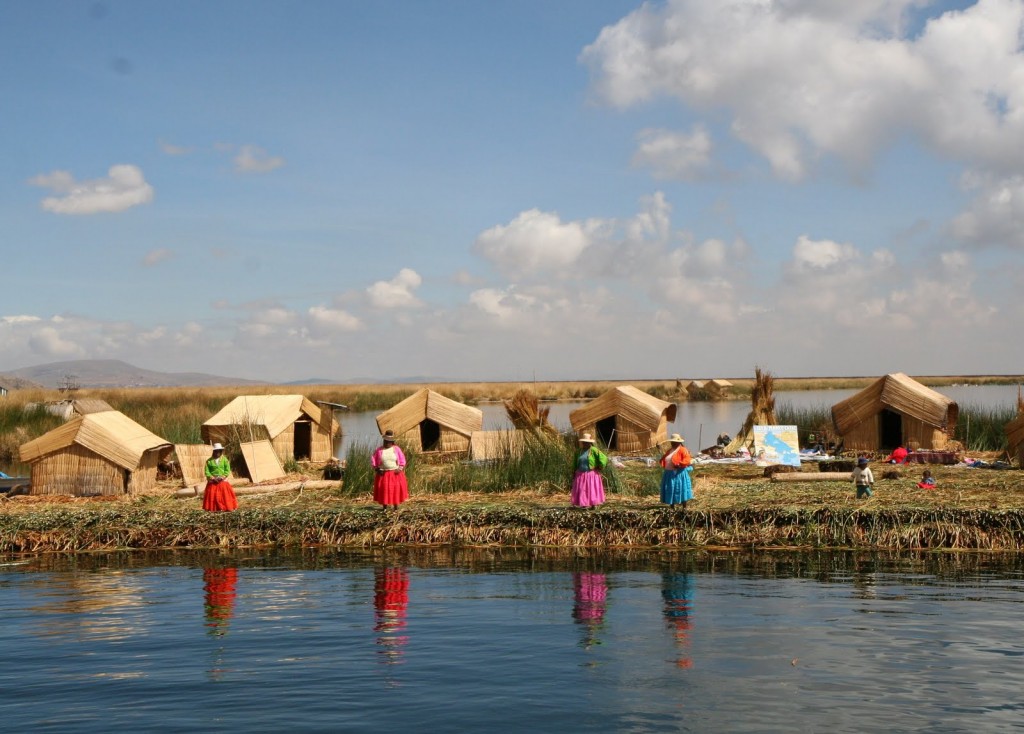
My memories of Lake Titicaca, Peru, serve as a constant reminder of my first world blessings. This column will focus on my visit to the famous Uros floating reed islands, and next month I will elaborate on my homestay experience with an indigenous Quechua-speaking family on the island of Amantani. On both legs of this trip there would be a poignant contrast between the life at home and the lives I intersected with.
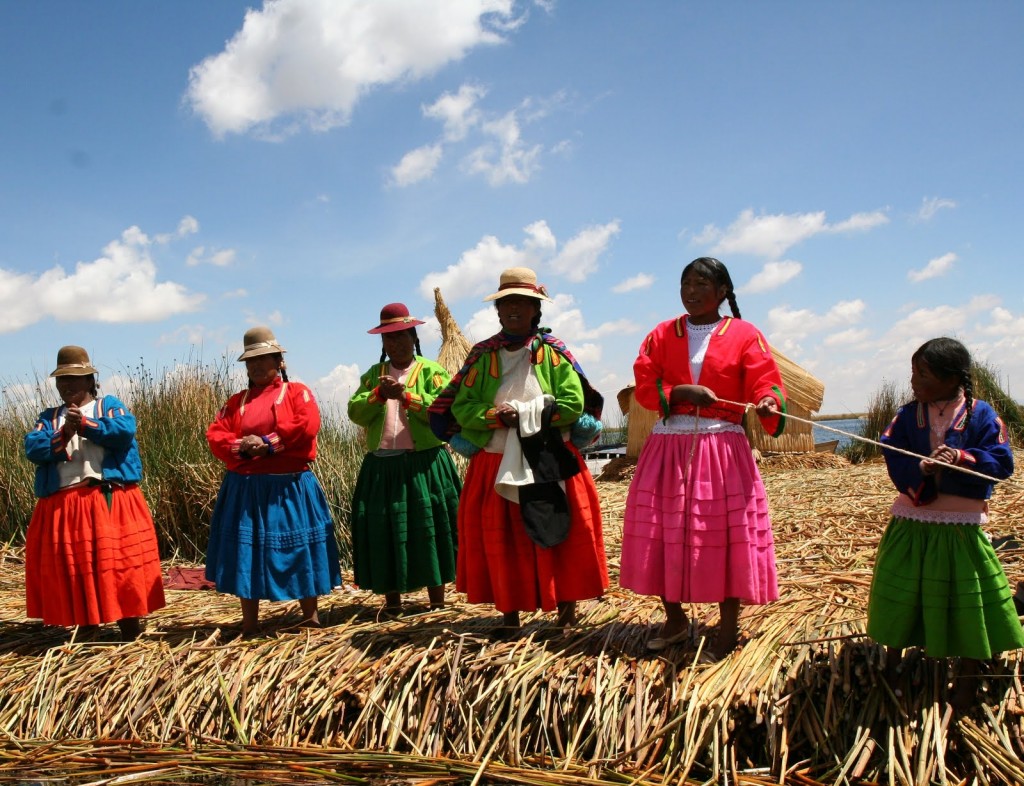
My adventure began with a two-hour long dinghy ride to Isla Flotante, one of the many floating islands in the Bay of Puno on Lake Titicaca. As our boat sliced through the water, the lake reflected fluffy white clouds against a palette of brilliant blue sky. Rays of light danced along the surface of the water, as if performing a prelude to the adventure ahead. I was giddy with excitement, and must have looked like a complete lunatic with a goofy smile, covered head-to-toe in long-sleeved shirts and pants, and smeared with SFP 70 sunscreen over any remaining exposed area.
Straddling the border of Peru and Bolivia, Lake Titicaca is the largest and highest navigable lake in the world at 12,566 feet above sea level. This expanse of sparkling blue water is notable for housing over 3,000 indigenous members of the Uros tribe on approximately 40 islands made of totora, the water reeds that grow abundantly in the lake. The Uros predate the Incan civilization, and their lifestyle has revolved around the totora for centuries. According to the Uros, the long, cat-tailed reed is a “gift from God to their ancestors”—the fleshy white part of the totora provides sustenance, and the fibrous contents contain iodine which promotes dental hygiene. Dried reeds are burned to provide heat for warmth and cooking. They are routinely knit and bundled to replenish island floors, and used to build shelter, boats, ropes, and even watch towers for communication.
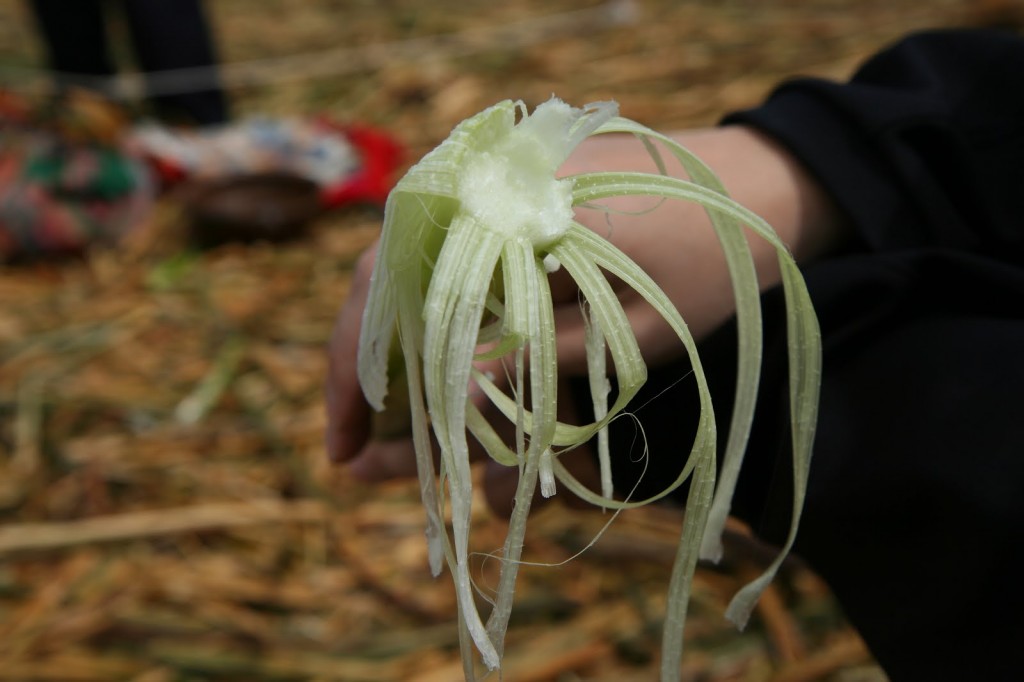
As we sped through the open water, the floating island appeared to rise out of nowhere. I almost mistook the island’s totora floor for hay, as dried reeds were strewn about somewhat haphazardly. Although the surface of the island was stable, my first steps were met with a slight bounce and an audible crunch.
I was greeted by a receiving line of native women wearing their traditional, brightly colored garb, flashing smiles with incredible pearl-white teeth. The next hour was a whirlwind tour of their island and customs. I had an opportunity to chew on fresh totora, which has the flavor and texture of white asparagus. The ladies giggled as they dressed me in their wool skirts; due to the near-freezing nighttime temperatures, harsh wind and sun, they wear three layers for warmth and protection from the elements. As I toured the island, we communicated with hand gestures and laughter. Despite the language barrier, they explained that an advantage of a totora island home is simplified dispute resolution; during conflicts, local residents can saw off their part of the island and float away.
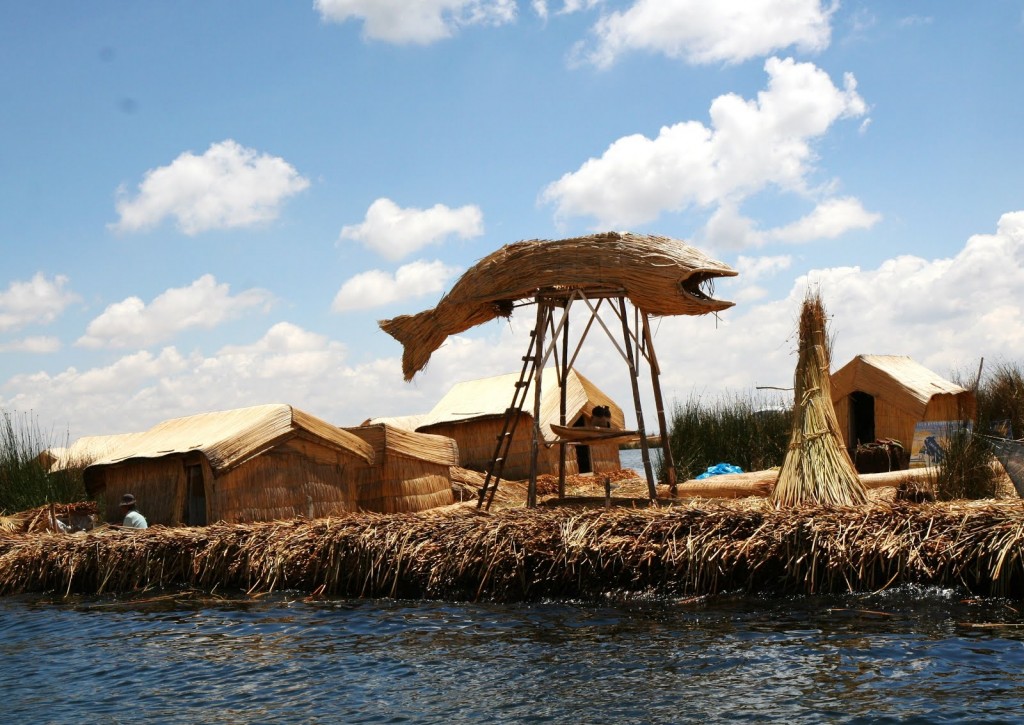
Despite the fascinating exploration of life on a man-made island, the tour definitely had elements of artificiality. I found this unfortunate, as I strive for authentic experiences when traveling abroad. Tourism has increasingly become a source of income for the Uros people, and it shows. I was constantly being encouraged to purchase handicrafts constructed from totora. Any photography had to be taken discreetly, as the locals demanded payment to have their picture taken. I noticed that some of the huts had solar panels, with television and radios playing local stations. This intrusion of technology into an older, traditional culture was perhaps inevitable, but somewhat disappointing. It was only afterwards that I learned that this was as close as I was going to get to a genuine interaction with the Uros. Many of the locals who adhere more strictly to a traditional lifestyle tend to shy away from visitors, and maintain their privacy far away from the shoreline.
Nonetheless, I am thankful for the opportunity to have visited the Uros people and to have learned about a culture so different from ours. The people live simply and resourcefully. They still use their “gift from God” in all aspects of their lives, and have continued to live off their environment while integrating a few creature comforts of the modern world. As my dinghy pulled away from Isla Flotante, I realized that even with the commercialized aspects of my visit, the Uros should be lauded for maintaining a careful balance between new and old. Their centuries-old existence is an important reminder of lessons sometimes forgotten in our society of convenience and abundance—to live more simply and be grateful for the many blessings that surround us.
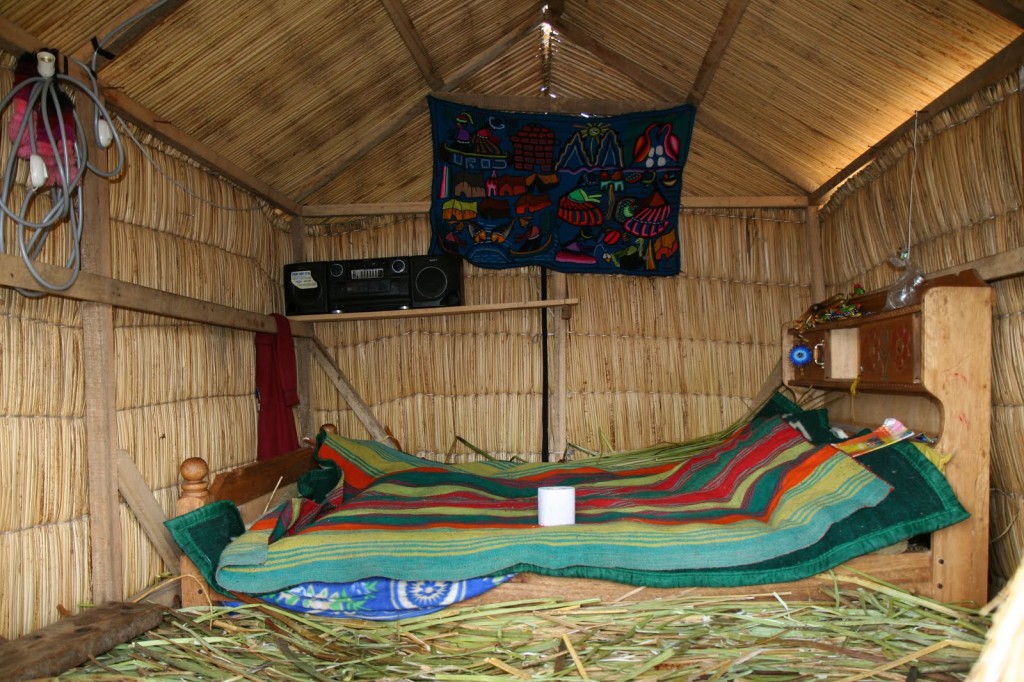
Getting There
The closest airport to Lake Titicaca is in Juliaca (JUL), approximately 28 miles north of Puno. LAN Airlines and TACA offer daily flights from Lima, Arequipa, and Cusco to Puno. Depending on your departure point, domestic flights are generally a quick jaunt across the country. The city of Juliaca is quite hectic and overwhelming upon arrival; you should contact your hotel to reserve direct shuttle transportation from Juliaca to Puno (approximately an hour away). Prices should be approximately $10 per passenger. Due to the high altitude of this region, an overnight stay is recommended in Puno before joining a tour to visit Lake Titicaca.
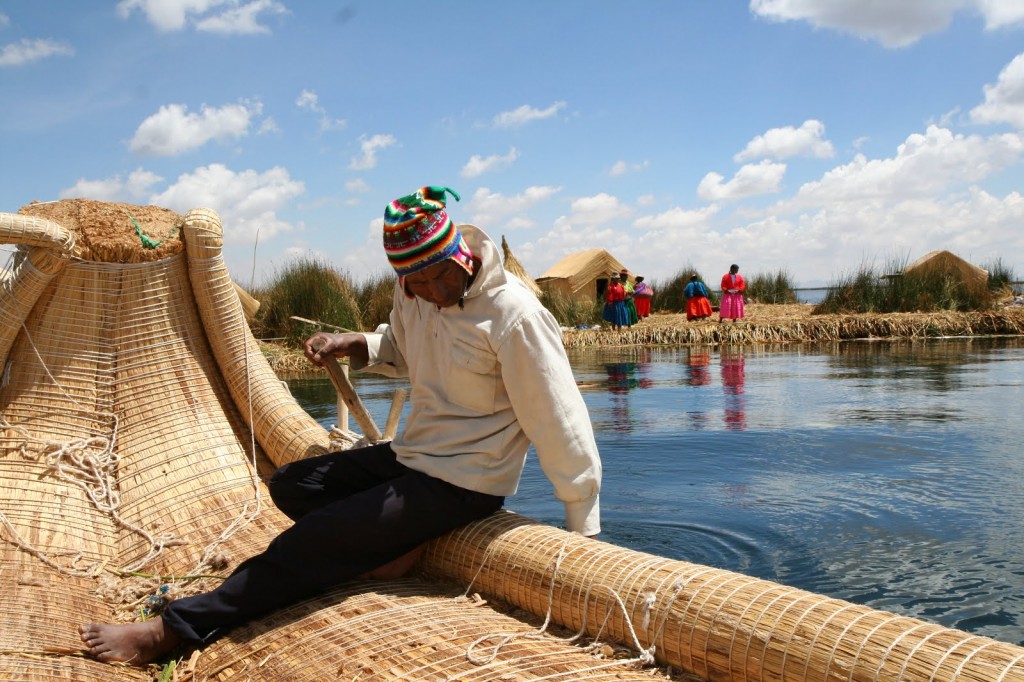
Tour Operators
All Ways Travel
Specializing in daylong trips to the Uros floating islands and multi-day home stay experiences with other indigenous people of Lake Titicaca, All Ways Travel is committed to providing fair treatment and payment to host families for their cooking and lodging services.
Staying There
Qelqatani Hotel
Jiron Tarapaca 355, Puno, Peru
As is the case with many local Peruvian hotels, actual rates are generally much lower than advertised online. Prices should begin at approximately $55 per night for a party of two. The Qelqatani Hotel is centrally located, just one block from the main pedestrian shopping center, and close to the town square, Plaza de Armas. Request a room on the fourth floor, as those rooms have been renovated more recently and offer marble-tiled bathrooms and down blankets. Front desk staff is extremely accommodating, offering five-star services with complimentary coca tea. Rates include daily breakfast with made-to-order omelets, fresh juice, ham, cheese, baked bread, and fruit.
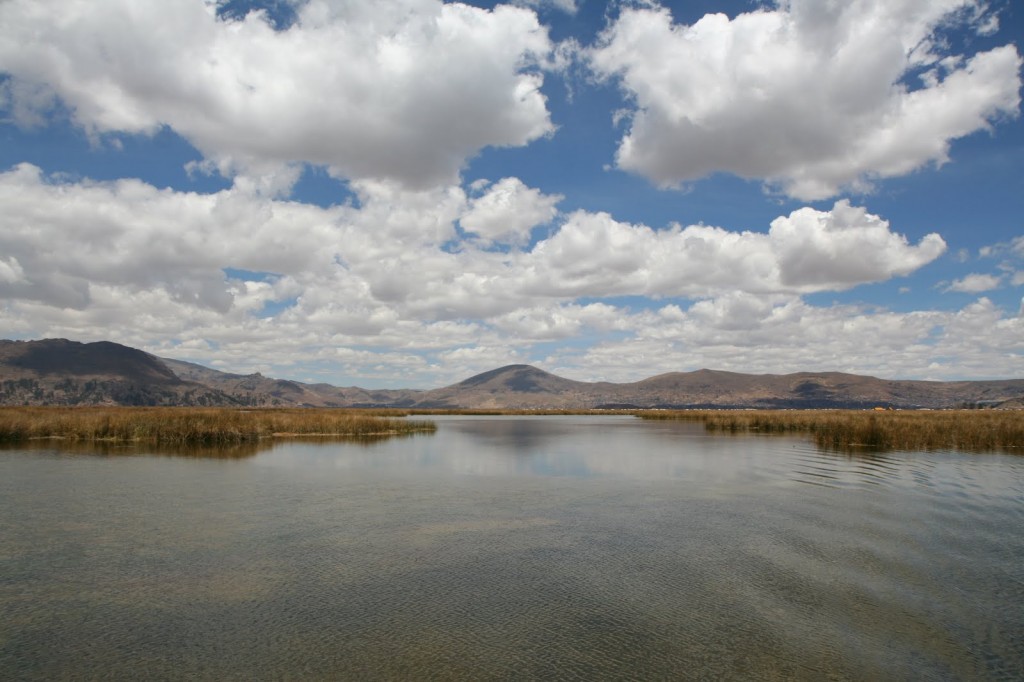
Eating There
Casa Grill La Estancia
Calle Libertad 137, Puno Peru
If the plethora of pizza restaurants catering to tourists in Puno makes you cringe, stop here for some of the most authentic local cuisine in the area. The restaurant serves traditional Peruvian dishes made with alpaca and cuy (guinea pig), ceviche, grilled plaintain, and offers pisco sours for those who are inclined to partake in the national drink of choice. Dinner and a drink will cost between $7 to $10.
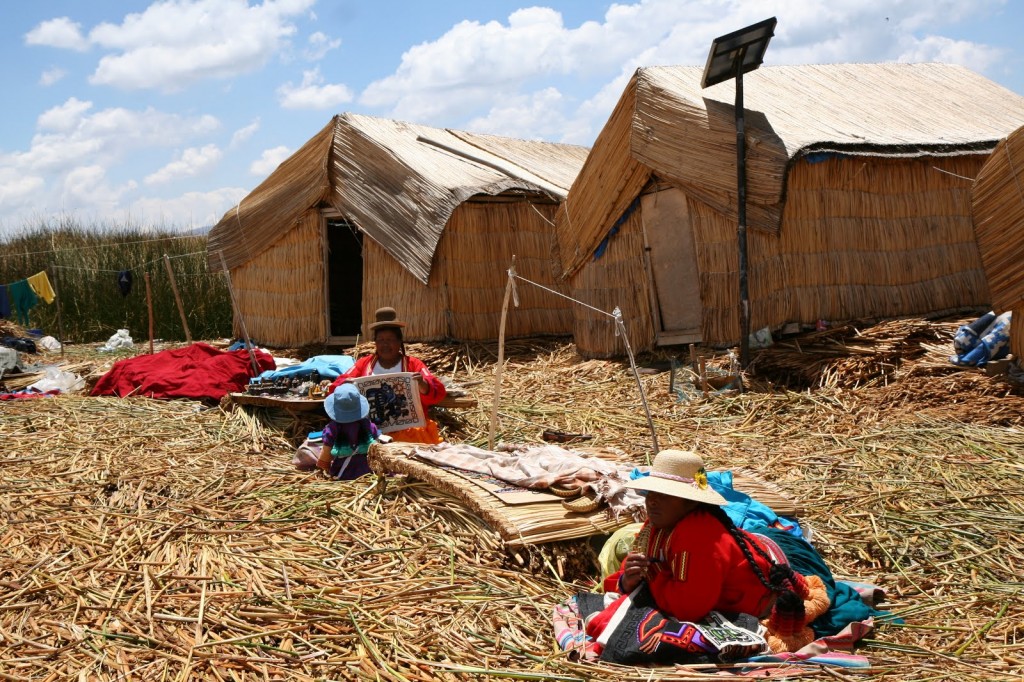
La Casona Restaurant
Lima 423 (Segundo Piso), Puno, PeruIf you enjoy people watching while you dine, snag a seat on the second floor of this restaurant. You can peer into the pedestrian street along the Plaza de Armas while trying local dishes such as quinoa soup and grilled trout caught in Lake Titicaca.
 Asian Fortune Your source for all things Asian American
Asian Fortune Your source for all things Asian American



